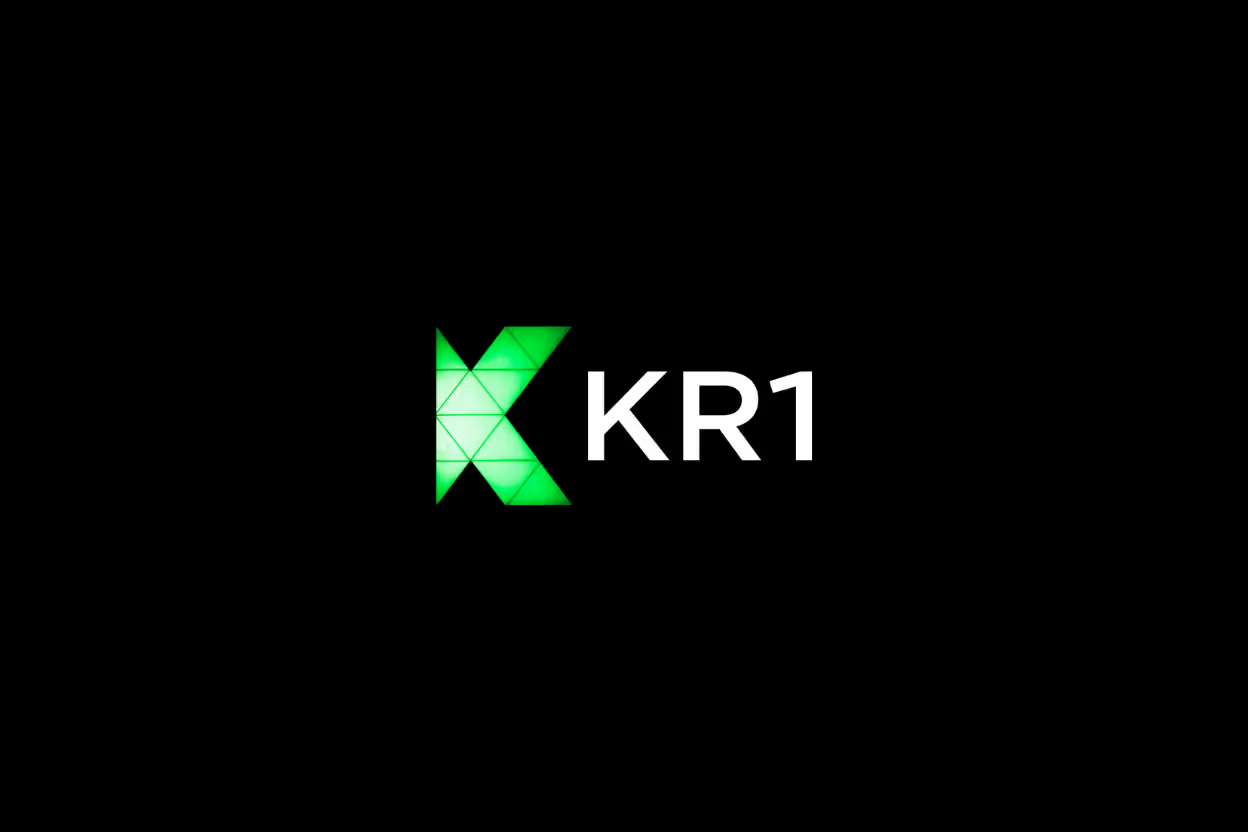The pace of blockchain innovation is pressing builders to rethink how they develop and launch projects. The "Fork First, Explain Later" approach is quickly gaining ground among crypto and web3 founders as a way to speed up iteration without waiting for full consensus or lengthy approvals. This mindset prioritizes action—forking or launching first—then clarifying the rationale later, helping teams capture early market positioning and stay competitive.
For founders and VCs, this means embracing rapid experimentation alongside calculated risk. It raises critical questions about balancing innovation with security, and about how to communicate effectively after bold moves have been made. Understanding this ethos is key to navigating the evolving demands of blockchain development and investment today.
Understanding the 'Fork First, Explain Later' Ethos
Speed often beats perfection in blockchain development. The "Fork First, Explain Later" mindset reflects a shift where builders prioritize launching code or forking early over waiting to craft perfect documentation or strategy. By acting first, teams stake their claim in fast-moving markets. But this method isn’t just about haste—it's a strategic balance of risk, timing, and communication.
Historical Precedents in Blockchain Development
Blockchain history shows several cases where projects forked or launched quickly before offering full explanations. Consider Bitcoin Cash’s 2017 fork from Bitcoin. The move happened rapidly, driven by differing visions for scaling, with a detailed plan revealed only after the fork was public. This bold step sparked fierce debate but secured immediate market recognition for Bitcoin Cash.
Another example is Ethereum Classic, which emerged after Ethereum’s DAO hack. The decision to fork Ethereum was rapid, while the rationale and governance discussions followed. The fork established parallel chains, each gaining distinct communities.
From these examples, key lessons emerge:
- Rapid action can secure first-mover advantage but risks community fragmentation.
- Clear post-fork communication is essential to build trust and explain intentions.
- Early forks may lead to technical or adoption challenges needing careful follow-up.
These cases prove that acting first doesn’t eliminate the need to explain later. It years, though, often leads to a sharper focus on function before formalizing philosophy.
Importance of Speed in Web3 Innovation
Why does speed matter so much in blockchain and Web3? Because decentralized technologies operate in highly competitive environments where every second counts. Delaying a launch or fork to finalize explanations means giving rivals room to capture market share.
Speed enables:
- Quick user feedback and iteration in a live environment.
- Capitalizing on momentum before ideas become stale or copied.
- Testing new governance or technical models under real-world conditions.
Delaying for full clarity risks losing the race for attention and adoption. Yet, fast action requires a mindset ready to address risks publicly and adapt strategies after launching.
In practice, builders who ask, “Can we ship now with minimal viable explanation?” put themselves ahead. Then they circle back with detailed communications as the community demands.
To survive and thrive, blockchain founders and VCs must recognize when “fork first” unlocks opportunity—and when it could disrupt trust. Balancing speed with responsibility defines success in this evolving sector.
Benefits and Risks of Forking First
Adopting a "fork first" strategy reshapes how builders and founders approach blockchain innovation. Acting quickly to fork or launch before full explanations or consensus might feel risky, but it carries distinct advantages that can accelerate progress and market positioning. On the flip side, these bold moves also introduce challenges that can affect project stability, legal standing, and community relations. Understanding both sides helps founders make informed choices and manage risks as they push forward.
Advantages for Builders and Founders
Forking early offers several powerful benefits that many builders find hard to ignore:
- Rapid Prototype Testing: Forking lets teams test ideas live without waiting for layers of approval. You get to see what works, what breaks, and how users respond in real conditions. This hands-on feedback is invaluable for refining your product.
- Signaling Commitment: Launching first sends a strong signal to investors, users, and competitors that your team is serious and moving fast. It can attract attention and rally support before others catch up.
- Gaining Early User Feedback: Before crafting perfect documentation or whitepapers, you’re already inviting user participation. This early feedback loop helps identify features users want or problems you might have missed.
By getting a working version out early, you also reduce the risk of being sidelined by faster rivals. In blockchain’s competitive environment, speed can be as important as innovation. Acting first can mean securing market share and shaping the narrative.
Challenges and Risks to Watch For
Forking without full clarity isn’t without its pitfalls. Here’s what to watch for and how to soften the blow:
- Governance Risks: Forking can create confusion over who sets rules post-fork. If governance isn't clearly defined from the start, it risks splintering support and fracturing decision-making.
- Market Confusion: A new fork may confuse users and investors about which version to trust or back. It can dilute brand identity and weaken user loyalty.
- Legal or Regulatory Concerns: Forking projects quickly without vetting may trigger legal scrutiny, especially if intellectual property or securities laws come into play. Understanding regulations early is crucial.
Managing these challenges means building a plan for quick communication, mapping governance from day one, and consulting legal advice before public launches. Managing risk well means not just moving fast but moving smart.
How Does Forking Affect Community Trust?
Trust is the glue that holds blockchain communities together, and premature forking tests that bond. When founders fork without explaining first, the community can feel blindsided or unsure about intentions. This risks cynicism, lower engagement, or even a breakaway faction forming.
However, transparency after the fork can restore and sometimes even increase trust. If founders openly share reasons, guide governance updates, and invite dialogue, communities often respect the courage to act and the willingness to clarify.
Think of it like a trust reset button. You press it with forking, but how you handle communications afterward determines whether the community hits restart or shutdown.
Being proactive in sharing updates, listening to concerns, and showing commitment beyond just technical code can make a big difference in long-term community strength.
This section has outlined the key benefits and risks linked to a “fork first” approach. Next, the article will explore strategies for balancing that speed with responsibility.
Implementing the Ethos: Practical Strategies for Builders
Adopting the "Fork First, Explain Later" ethos means acting fast and then clarifying your moves. But speed doesn’t have to come at the cost of transparency or quality. Builders can combine rapid launches with smart communication and continuous refinement to keep users and stakeholders aligned. This section breaks down actionable ways to balance these demands and highlights situations where slowing down might serve your project better.
Balancing Speed with Clear Communication
Launching quickly is essential, but it raises a question: how do you keep your community and users informed without slowing down your momentum? The key is planning communication in parallel with development rather than afterward.
Here’s how to do it:
- Set expectations early: Even a brief note or announcement about what you're building and why helps prepare your audience.
- Use simple, clear messaging: Avoid jargon or exhaustive details. Focus on what users need to know now.
- Employ multiple channels: Combine blog posts, social media updates, and developer forums to reach different stakeholders.
- Follow up regularly: Commit to ongoing updates after the fork or launch to address questions and clarify decisions.
Effective communication doesn’t mean you have to explain every technical detail upfront. It means providing enough context to build trust and reduce confusion. Transparency is about telling your story as it unfolds, showing that even rapid moves have thoughtful reasoning behind them.
Iterative Development and Feedback Loops
Once the fork is live, the focus shifts to refinement through real-world input. This is where iterative development and strong feedback loops become powerful tools.
Why are these cycles so vital?
- You learn fast: User behavior, bug reports, and performance data highlight what works and what doesn’t.
- You stay flexible: Iterations let you adjust features or governance based on concrete needs, not guesses.
- You build community involvement: Soliciting feedback gives users a stake in shaping the project’s future.
A good process typically involves:
- Collecting user feedback via forums, surveys, or analytics.
- Prioritizing issues and feature requests based on impact and feasibility.
- Releasing updates or improvements quickly, often in short development sprints.
By welcoming feedback early and often, you transform a quick fork into a living project that adapts and improves with the community.
When to Prioritize Explanation Over Forking
Rapid forking isn’t always the right call. Certain situations demand you slow down to explain clearly before taking action:
- Complex governance changes: Major shifts in rules may require consensus building before a fork to avoid fracturing your community.
- Sensitive security updates: If a vulnerability affects users, clear, pre-fork explanations can help manage risk and trust.
- Legal or regulatory concerns: When compliance issues arise, stepping back to outline your approach prevents misunderstandings or violations.
Asking yourself, “Is this move too big or sensitive to just launch and explain later?” helps determine when patience outweighs speed.
Balancing speed and explanation is about reading the room. In a competitive environment, fast action is critical, but some forks need thoughtful communication to protect your project’s reputation and relationships.
These strategies help you apply the Fork First, Explain Later ethos more wisely—moving fast but not blindly, driving progress while keeping your community informed and engaged.
Impact on the Blockchain Ecosystem and Investment Landscape
The "Fork First, Explain Later" mindset doesn't just affect how projects launch; it also reshapes the wider blockchain ecosystem and the way investors think about these fast moves. When builders act quickly, investors must adjust how they evaluate potential risks and rewards. Simultaneously, the community experiences both fresh opportunities and heightened competition, which creates a new environment for collaboration and rivalry. Let’s break down these changes from the investor side and the ecosystem’s broader dynamics.
Investor Perspectives on Rapid Forking
Venture capitalists (VCs) and other investors are learning to read between the lines when projects fork early and explain their reasons later. This approach challenges traditional investment models, which usually favor detailed whitepapers, roadmaps, and clear governance before funds are committed. In the world of rapid forking, investors must:
- Adjust their risk appetite. Investing in a fork-first project means accepting uncertainty about the underlying strategy and technical direction. Some VCs embrace this high-risk/high-reward environment, hoping that quick execution signals strong founder conviction and market agility.
- Prioritize agile due diligence. Without full explanations upfront, VCs rely more on the team’s reputation, past track records, and early user activity. They watch how teams communicate post-fork and whether they can quickly articulate a clear vision and path forward.
- Look for signs of resilience. Rapid forking can lead to technical or community challenges. Investors favor projects that handle these issues transparently and evolve their governance thoughtfully after launch. This adaptability often indicates a project’s long-term survival potential.
Ultimately, many VCs see early forks as experiments in market positioning. They ask: Can this project capture users fast enough to build momentum before competitors? And they consider whether founders can back this initial leap with rapid improvements and solid reasoning once the fork is live.
Ecosystem Dynamics and Competitive Pressure
Rapid forking creates a distinct push and pull in the blockchain community. On one hand, it introduces fresh energy through new projects and ideas, but on the other, it fuels competition that intensifies pressure on established players. Here’s how this ethos influences the ecosystem:
- Collaboration strains under competition. Teams racing to fork and launch first may prioritize speed over working collectively. While collaboration has been a core value in blockchain, rapid forks raise the chances of fragmented communities and duplicated efforts.
- Fierce competition accelerates innovation cycles. Projects must iterate quickly to stay relevant, leading to an environment where features, governance models, or tokenomics update at a breakneck pace. This can benefit users with faster improvements but creates volatility.
- Ecosystem evolution becomes user-driven. As forks launch rapidly, user feedback and adoption shape which chains succeed. This community-led selection often results in a natural weeding out of less viable projects but can also cause disillusionment if too many forks confuse the market.
- Network effects gain new complexity. Forks fragment liquidity, developer attention, and user bases. This can weaken network effects that many blockchains rely on, but it also encourages creative approaches to interoperability and cross-chain collaboration.
This fast-moving, often chaotic environment forces all participants to think differently about how projects grow and sustain themselves. It raises questions like: How much competition is productive before it hurts the whole ecosystem? and Can true collaboration survive the race to be first?
In this shifting scenario, understanding how rapid forking changes both investment tactics and ecosystem cooperation is key for anyone building in blockchain today. Recognizing the trade-offs helps stakeholders decide when to push for speed and when to hold back for clarity and alignment.
Conclusion
The “Fork First, Explain Later” ethos reflects a shift toward faster innovation in blockchain. It challenges builders and investors to act quickly while managing risks linked to governance, community trust, and legal uncertainty. Speed gives projects a chance to capture momentum, but transparency and clear communication remain essential to sustain long-term support.
Founders should carefully weigh when rapid forking suits their goals and when slowing down to explain is necessary. VCs must adjust their assessment strategies to value teams that combine swift action with thoughtful follow-through. This balance between speed, openness, and responsibility will shape the future of blockchain projects and investments.
How will your team decide when to fork first and clarify later? The path forward demands not just fast moves, but smart, honest ones that build lasting trust.









